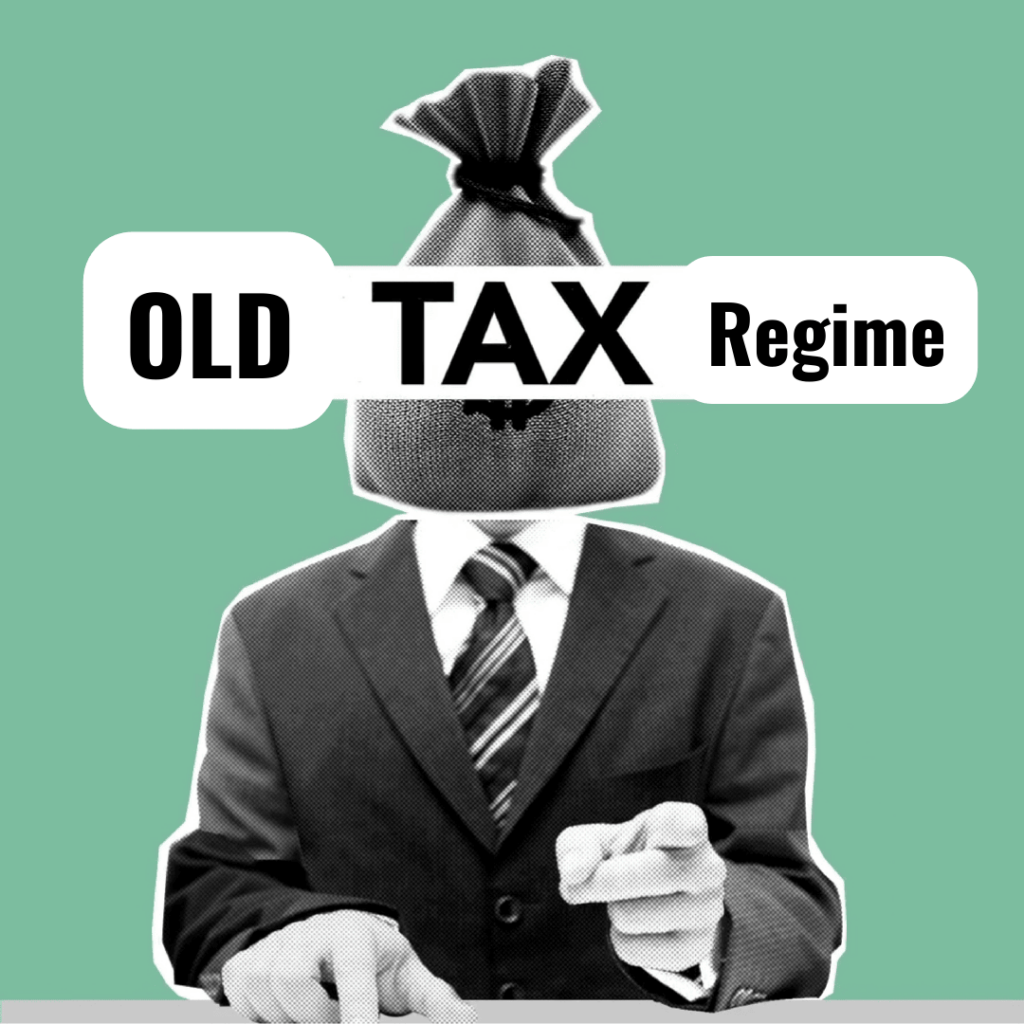
Introduction
Taxes are one of life’s few certainties, but with smart tax saving strategies, you can significantly reduce your financial burden. While paying taxes is unavoidable, proper planning can help you make the most of available deductions and exemptions. In today’s evolving financial landscape, understanding tax saving methods is essential for securing your future.
Many individuals prefer the old tax regime for its well-established tax saving benefits, including a wide range of deductions and exemptions. Although the government has introduced a new tax system with lower tax rates for some, the traditional regime remains attractive, especially for those who have structured their investments and savings around its benefits.
This blogpost is meant to help you understand the different tax-saving tools available under the old tax regime. Whether you earn a salary or run your own business, you will find detailed explanations of each option here. You will discover various financial instruments that not only reduce the amount of income you are taxed on but also help grow your wealth for long-term goals like retirement, education, or unforeseen emergencies.
Each option is discussed with a focus on its features, benefits, and the points you need to consider before investing. By learning about these tools, you can better decide which ones fit into your overall financial strategy. Always remember that while reducing your tax burden is important, your main objective should be to build a solid financial foundation for the future.
In the sections that follow, we will look at how to compare tax systems and then delve into each tax-saving product available under the old regime. I am sure that this blogpost will guide you to make informed decisions and set you on a path to a more secure financial future.
Table of Contents
Choosing the Right Tax Regime: Evaluating your Options
To make the most of your tax planning strategy, the first important decision is choosing the tax system that best fits your financial circumstances. With the introduction of a new tax regime by the government, many taxpayers now face the choice of whether to continue with the old system or switch to the new one. The answer to this decision lies in understanding your personal income, eligible deductions, and allowances, and then comparing the benefits of both systems.
Under the old tax regime, you have access to a variety of deductions and exemptions that can significantly lower your taxable income. For example, there are popular deductions available under Section 80C, benefits for paying interest on home loans, and allowances for travel and housing that may already be a part of your salary structure.
For many individuals who have planned their finances around these benefits over the years, the old regime remains a tried and trusted option. In contrast, the new tax regime offers lower tax rates and a simplified calculation method; however, it requires you to give up many of the deductions and exemptions that you might already be using.
To decide which system is best for you, start by gathering all the details of your income, along with the deductions and allowances you currently claim. There are many online tax calculators available, and you might also consider consulting a tax professional to help you compare your options. By calculating the total tax liability under both regimes, you can determine which system is more cost-effective for your particular situation.
For many taxpayers, if the total of your eligible deductions exceeds a certain breakeven point, the old tax regime may actually save you more money than the new one. Conversely, if you do not claim many deductions or if your total eligible deductions are on the lower side, then the new regime might be simpler and even more beneficial.

Choosing the right tax system is not just about the numbers, it’s also about how each option fits with your long-term financial plans. A well-constructed financial portfolio that includes regular savings, investments, and proper risk management often aligns better with the old regime’s detailed structure. By carefully comparing the benefits and aligning your choice with your broader financial objectives, you can ensure that your tax planning efforts contribute to a secure and stable future. The ultimate goal is to choose a system that not only minimizes your tax outgo but also helps you meet other long-term needs and aspirations.
Tax Saving Options under the Old Tax Regime
When you decide to stick with the old tax regime, you open the door to many different instruments designed to save taxes while supporting your overall financial plan. In the sections below, we explore several options in detail, explaining how each one works, what tax benefits it offers, and the key points you should consider when including them in your investment portfolio.
1. Equity-Linked Savings Scheme (ELSS)
Equity-Linked Savings Schemes, often called ELSS, are among the most popular choices for saving taxes while also entering the world of equity investments. These mutual fund schemes invest primarily in stocks, which means they offer the possibility of higher returns compared to traditional savings instruments. One major advantage of ELSS is that they come with a lock-in period of only three years. This relatively short lock-in period not only enforces discipline in your investment habits but also offers more flexibility and liquidity compared to many other tax-saving products.
Investing in ELSS allows you to claim a deduction of up to ₹1.5 lakh under Section 80C of the Income Tax Act. Over the three-year period, your investment can grow significantly as the market fluctuates, although any gains realized upon withdrawal are subject to long-term capital gains tax. The lower tax rate on these gains makes ELSS an attractive option for those with a higher risk tolerance and a long-term view of their investments.
It is, however, important to recognize that investing in equities carries some risk. Market volatility means that the value of your investment can go up or down depending on economic conditions and market trends. Therefore, while ELSS provides a great combination of tax saving and potential wealth creation, it may not be the best fit for someone with a very low risk appetite. To make the most of ELSS, investors should monitor fund performance regularly and stay informed about the investment strategies employed by their chosen mutual fund. In doing so, you can ensure that your portfolio remains aligned with your broader financial goals while also taking advantage of the tax benefits this scheme provides.
2. Public Provident Fund (PPF)
The Public Provident Fund, commonly known as PPF, is a trusted long-term savings instrument backed by the government. PPF offers a secure way to save money while earning a guaranteed return. One of the defining features of a PPF account is its long lock-in period of 15 years, which encourages disciplined, long-term saving habits. After the initial term, investors have the option to extend the account in blocks of five years, ensuring that the benefits continue well into the future. The interest rate on a PPF account is determined by the government and is typically revised every quarter, providing a steady and predictable return on your investment.
A key benefit of PPF is its triple tax advantage. The money you invest in a PPF account is eligible for a tax deduction under Section 80C, the interest earned is tax-free, and the amount received at maturity is also completely exempt from tax. This “exempt-exempt-exempt” status makes PPF a highly attractive option for those who wish to lower their taxable income while building a secure nest egg. Contributions can be made with as little as ₹500 per year and up to a maximum of ₹1.5 lakh per year, which makes this scheme accessible to a wide range of investors.

PPF is especially suited for conservative investors or those planning for long-term goals such as retirement or funding education. While the fixed returns from PPF may not match the high growth potential of equity investments, the safety and guaranteed returns provided by the scheme offer a reliable complement to a diversified investment portfolio. Additionally, the flexibility of partial withdrawals under specific conditions and the option to take loans against the account balance add to the overall attractiveness of PPF as a dependable tax-saving instrument.
3. National Pension System (NPS)
The National Pension System, or NPS, is a government-supported, voluntary scheme designed to help individuals build a retirement corpus while also enjoying tax benefits. NPS is aimed at those who are planning ahead for their retirement and wish to have a steady income stream in their later years. Through NPS, you have the flexibility to invest in a mix of asset classes such as equities, corporate bonds, and government securities. This diversified approach allows you to balance risk and reward based on your individual financial goals and risk appetite.
Contributions to NPS offer attractive tax benefits. Under Section 80C, you can claim a deduction of up to ₹1.5 lakh for your contributions. Additionally, an extra deduction of ₹50,000 is available under Section 80CCD(1B), making NPS even more appealing as a tax-saving option. The scheme is structured to encourage regular contributions, which not only help reduce your current tax liability but also gradually build a significant fund for your retirement. NPS offers flexibility in choosing your asset allocation either through an “Active” mode—where you decide how to distribute your investments—or an “Auto” mode, which automatically adjusts the mix as you get older and approach retirement.
It is important to note that funds invested in NPS are locked in until you reach the age of 60, meaning that the money is not easily accessible before then. Upon reaching retirement, you are allowed to withdraw a portion of the accumulated corpus as a lump sum, while the remaining balance must be used to purchase an annuity, ensuring a regular income. This long-term lock-in and structured withdrawal process make NPS an excellent choice for those focused-on retirement planning. Overall, NPS serves as a robust tax-saving instrument that not only lowers your current tax burden but also secures your financial future by creating a stable source of income during your retirement years.
4. Sukanya Samriddhi Yojana (SSY)
The Sukanya Samriddhi Yojana, abbreviated as SSY, is a government-backed savings scheme designed specifically for the benefit of a girl child. With SSY, families can open an account in the name of their daughter until she reaches the age of 10, making it a powerful tool for planning for her future education or marriage expenses. The scheme is unique in that it promotes long-term savings for a child’s future while offering attractive interest rates that are typically higher than many conventional savings options. The government reviews and sets the interest rate on a quarterly basis, ensuring that the returns remain competitive and beneficial for long-term growth.
One of the major advantages of SSY is its tax benefit. Contributions made to this scheme qualify for a deduction of up to ₹1.5 lakh under Section 80C, and not only that—the interest earned and the maturity proceeds are completely tax-free. This triple benefit makes SSY one of the most appealing tax-saving options available, particularly for parents who want to secure a bright financial future for their daughter. The scheme is designed to be accessible with a minimum deposit as low as ₹250, and it allows for an annual deposit of up to ₹1.5 lakh. These flexible limits ensure that families across different income groups can participate.
Besides its tax benefits, SSY also enforces a disciplined saving approach by encouraging regular contributions over a long period. Although the primary goal is long-term savings, the scheme does allow partial withdrawals under specific conditions, such as for higher education or marriage, subject to certain limits. By combining attractive returns with significant tax advantages and a focus on long-term planning, Sukanya Samriddhi Yojana becomes an excellent choice for families looking to invest in their daughter’s future while reducing their taxable income.
5. Senior Citizen Savings Scheme (SCSS)
The Senior Citizen Savings Scheme, commonly known as SCSS, is tailored specifically for those in their later years, providing a safe and reliable means of earning a steady income during retirement. This government-backed scheme is designed to meet the financial needs of senior citizens or those approaching retirement age by offering guaranteed returns and tax benefits. SCSS allows investments ranging from ₹1,000 up to ₹30 lakh in multiples of ₹1,000, thereby catering to various financial situations and requirements.
SCSS comes with a tenure of five years, which can be further extended in blocks of three years, making it a flexible option for retirees who need regular income over an extended period. One of the attractive features of SCSS is that the contributions you make are eligible for a deduction of up to ₹1.5 lakh under Section 80C of the Income Tax Act. The interest rate, which is set and reviewed quarterly by the government, is highly competitive and provides a consistent income stream. Although the interest is paid quarterly, it is important to note that any interest amount exceeding ₹50,000 in a financial year becomes fully taxable.
While SCSS is an excellent tool for ensuring financial stability during retirement, there are a few considerations to keep in mind. For instance, the scheme imposes penalties for premature withdrawals, and there is no facility to avail a loan against the deposited funds. Despite these limitations, the combination of a secure investment, guaranteed returns, and tax benefits makes SCSS a valuable addition to the financial portfolio of any senior citizen. Overall, SCSS offers a balanced mix of safety, assured income, and tax efficiency, making it an ideal choice for those who wish to maintain financial independence and security in their later years.
6. Term Insurance
Term insurance is one of the most fundamental yet essential components of any comprehensive financial plan. Unlike other forms of insurance that combine savings and protection, term insurance focuses solely on providing a high level of life cover for a very affordable premium. This type of policy is designed to offer financial security to your dependents in the unfortunate event of your untimely demise. With a relatively low cost and a high sum assured, term insurance is considered a crucial safety net that protects your family’s future.

The premium you pay for term insurance qualifies for a deduction of up to ₹1.5 lakh under Section 80C of the Income Tax Act, making it not only a tool for risk protection but also an effective means of saving on taxes. It is important to note, however, that term insurance is not an investment product and does not provide any maturity benefits. Its sole purpose is to provide financial relief to your loved ones when they need it the most.
Many term plans also offer additional riders, such as waiver of premium, critical illness cover, or disability cover, which can enhance the overall protection provided by the policy. These riders, though beneficial, may add to the premium cost, so it is essential to evaluate your requirements before opting for them.
When selecting a term insurance plan, consider factors like the claim settlement ratio and the reputation of the insurance provider. A high claim settlement ratio is a strong indicator of the insurer’s reliability in fulfilling claims. Term insurance is ideally suited for individuals with dependents, whether it is a spouse, children, or elderly parents, ensuring that in case of an unfortunate event, your family will have the necessary financial support. In essence, while term insurance does not contribute to wealth creation, it is a vital component of your overall financial plan by offering a safety net that allows you to focus on other aspects of building your future.
7. Health Insurance Policies
Health insurance has become an indispensable part of modern financial planning, especially given the rising costs of medical care. These policies are designed to cover a broad range of healthcare expenses, from hospitalization costs to outpatient consultations, ensuring that you and your family are protected against the financial burden of medical emergencies. With healthcare expenses on the rise, having robust health insurance coverage is more important than ever.
Under Section 80D of the Income Tax Act, the premiums you pay for health insurance can be deducted from your taxable income. For individuals, this deduction can be as much as ₹25,000 for coverage of self, spouse, and dependent children. Moreover, if you include your parents in your policy, the deduction increases, up to ₹25,000 if they are below 60 years of age, and up to ₹50,000 if they are senior citizens. In some cases, if you yourself are a senior citizen, the overall deduction can reach ₹1 lakh. This makes health insurance not only a necessity for safeguarding your health but also a strategic choice for reducing your tax liability.
When considering a health insurance policy, it is vital to review the policy details carefully. Look for coverage limits, exclusions, sub-limits on specific treatments (such as room rent or critical care), and any waiting periods for pre-existing conditions. Understanding these nuances will help you choose a policy that best fits your personal health needs and financial situation. A good health insurance plan not only provides peace of mind during medical emergencies but also plays a crucial role in your overall financial planning by contributing to your tax-saving strategy.
Conclusion: Aligning Tax Savings with Your Financial Goals
In summary, opting for the old tax regime unlocks a host of tax-saving opportunities that can be tailored to match your unique financial needs. Each option discussed in this blogpost comes with its own set of features, benefits, and important considerations, so it is crucial to understand how each aligns with your long-term objectives.
It is essential to keep in mind that while saving on taxes is an important aspect of financial planning, it should not be the only reason you choose a particular investment. Instead, tax-saving investments should complement your broader strategy of wealth creation, risk management, and long-term security. A diversified portfolio that includes a mix of these instruments can help you achieve your financial goals while reducing your tax burden. By carefully evaluating the pros and cons of each option and understanding how they contribute to both immediate savings and long-term financial growth, you can make informed decisions that support your overall future.
You can check out my other blogpost on the best tax regime that you can select for the current financial year.
Do Follow me on Linkedin and Quora for more such insightful posts on personal finance, money management, investments, retirement, etc.





